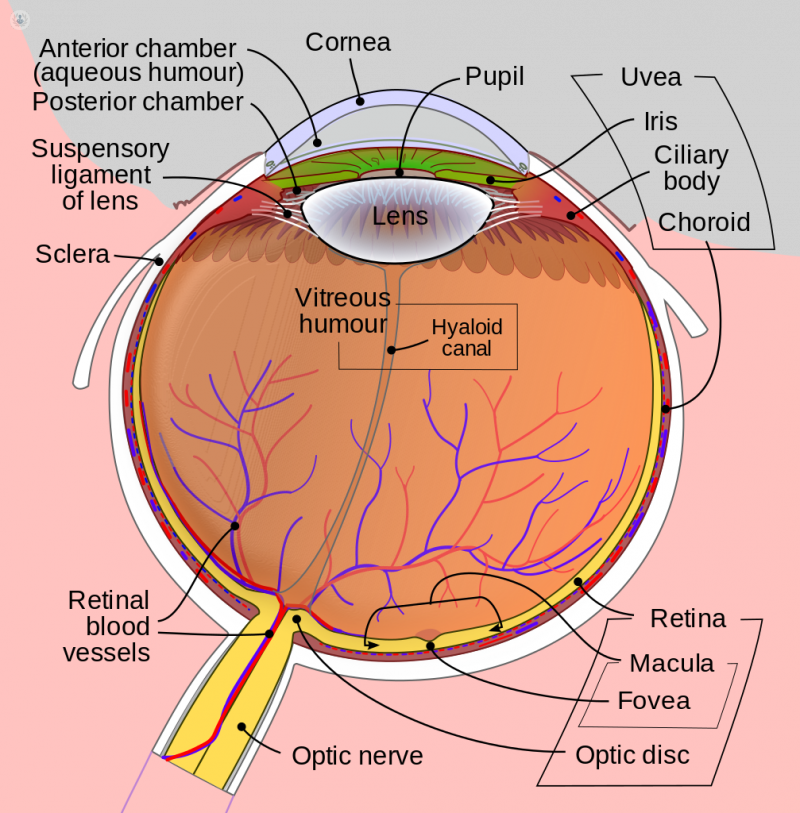Past, present and future of the pathologies of the retina
Written by:The retina is the inner layer of the eye in which the images we receive from our environment are transformed into nerve impulses that are sent to the brain through the optic nerve, where vision occurs in the posterior part of the eye, in the occipital area .
How can we prevent the main pathologies of the retina?
 At present, three of the four major causes of legal blindness are retinal problems: age-related macular degeneration (AMD), diabetic retinopathy, and myopia.
At present, three of the four major causes of legal blindness are retinal problems: age-related macular degeneration (AMD), diabetic retinopathy, and myopia.
Thus, we are faced with unavoidable factors such as age (in AMD) and the genetic load of each person, but there are also controllable factors, such as smoking and blood pressure. In the case of diabetes, for example, a strict control of it will improve the prognosis and evolution of diabetic retinopathy, and in the case of myopia magna, periodic eye fund control will detect lesions in the peripheral retina Or in the macula and treat them early.
In general, those at risk, such as the direct relatives of people with AMD from the age of 50, diabetics and myopic males should periodically monitor the fundus.
In recent years, have the pathologies of the retina increased?
Increased survival with longer life expectancy leads to a greater number of patients with AMD, since the main factor is age (aging); Every day there are more diabetics by the changes in the habits of life and of feeding and therefore more diabetic retinopathy; And in the case of myopia magna, there are a large number of high myopes in our area, as in the entire Mediterranean basin.
Has the diagnosis of the pathologies of the retina improved?
The new technologies allow us to better understand diseases and a much more effective treatment, therefore, ophthalmologists will diagnose them before, we will treat them more effectively and we will control them better.
What are the most effective techniques for treating pathologies of the retina
Optical coherence tomography (OCT) is the one that has revolutionized the diagnosis and monitoring of macular diseases. Diagnosis and follow-up is much more accurate; We know better some diseases of the retina, its mechanism of production and its evolution. It also allows us to better follow the patients and to know how they respond to the treatment.
What is the new OCT-angio?
The new OCT-angiography is used to study circulatory diseases of the retina, such as those mentioned above: DMAE, diabetic retinopathy and myopia magna, although in the latter two can also influence other factors; And other diseases such as venous obstructions, etc.
A test called fluorescein angiography or indocyanine green, consisting of the injection of a substance (fluorescein or indocyanine green) into the bloodstream is often used to test the retina when passing through it.
They are invasive tests that require more time and means; Have some risk but are rare. With the modern OCTs we can obtain images of the circulation of the retina and the choroid without the injection, with more detail, more information, in three dimensions, realizable in a few minutes and repeatable in the time as many times as we need given its Safety and speed, improving the information we have about the disease. The better we know the diseases we can treat them better.
What impact do new technologies have on the pathologies of the retina?
There is a myth and many people say that the view "is spent" with computers, screens, etc ... It is not true. The use of screens forces us to a greater visual effort and we get tired more, but it does not hurt sight. On the contrary, a good posture is important, avoiding reflections, the screen at the right height and rest periodically. They do not affect the retina in a special way.
What is the prognosis for retinal health in the coming years?
New diagnostic techniques such as new OCTs, OCT-angiography, new antiangiogenic medications, sustained-release devices for injected corticoids in the vitreous cavity, and improvements in surgical and instrument microscopes for vitreous- Retinal (vitrectomy) has advanced and will continue to improve the diagnosis and treatment of diseases of the retina.
On the other hand, as we have already mentioned, the increase in life expectancy and the increase in the prevalence of diabetes will cause AMD and diabetic retinopathy to increase significantly.


